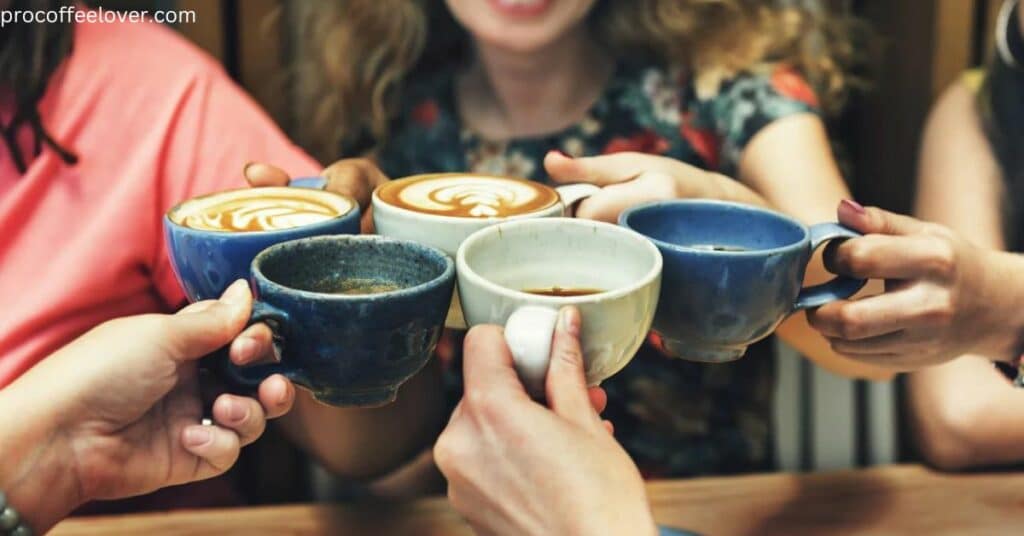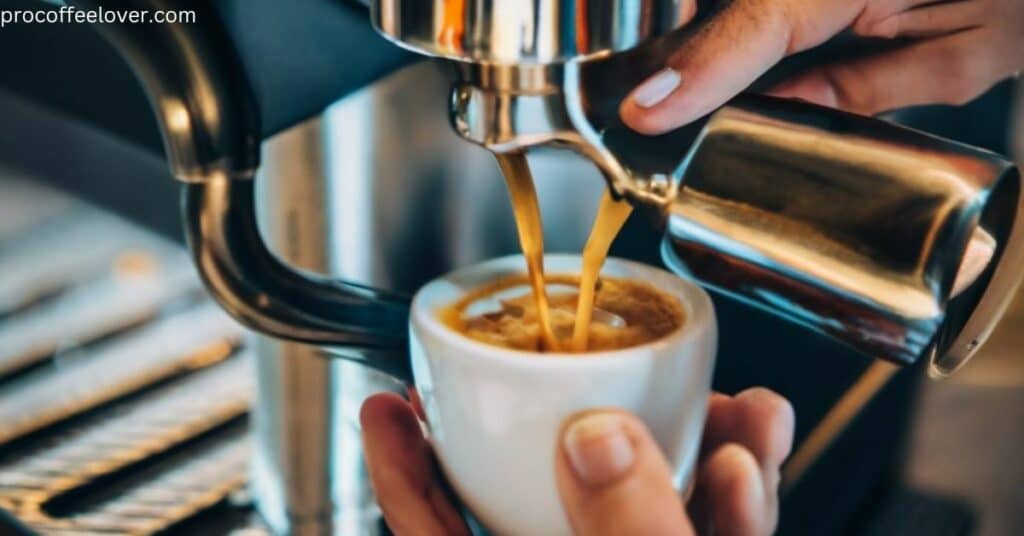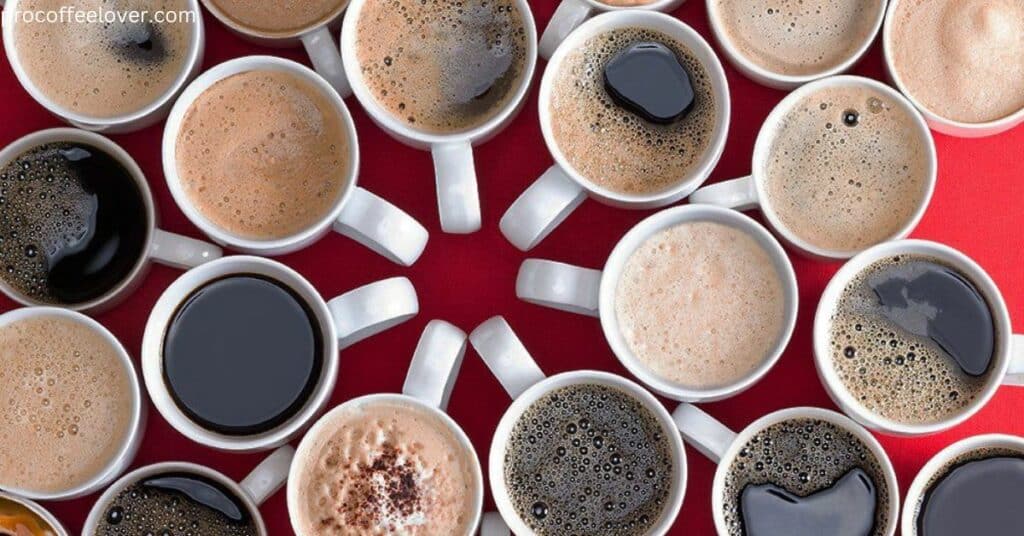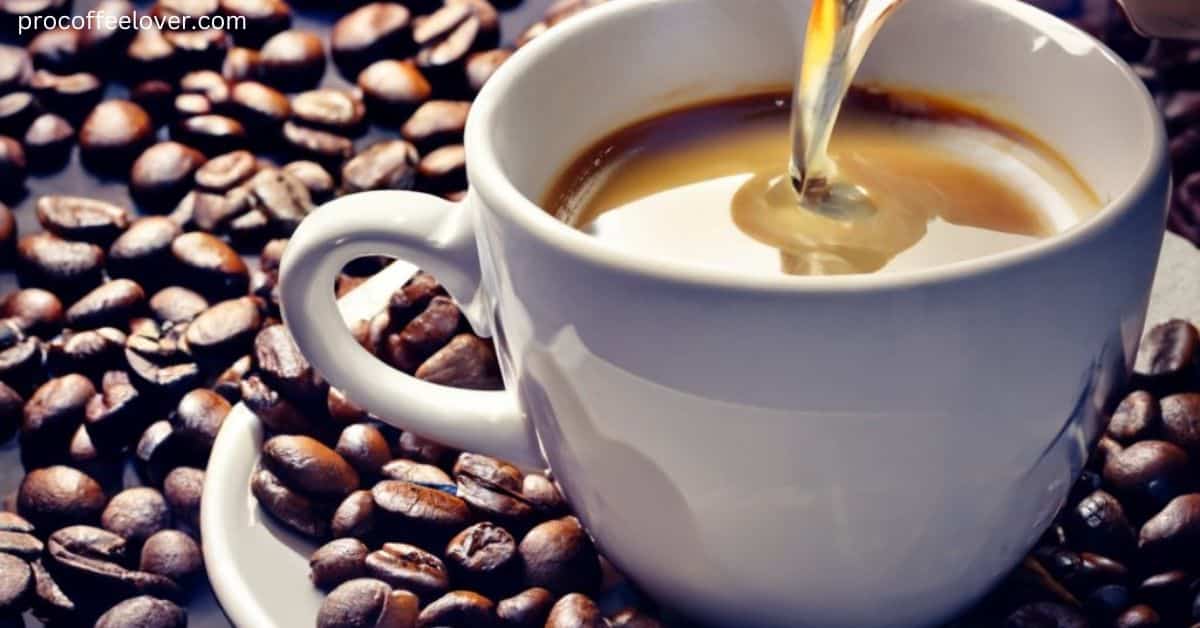How many mg of caffeine in a cup of coffee? You might be curious about your caffeine intake if you have a cup (or two) of coffee every morning. Here’s what you need to know before you pour another mug and add some milk and sugar.
Additionally, the majority of popular energy drinks include 70 to 100 mg of caffeine. Read the blog if you want to know how many mg of caffeine are in a cup of coffee.
Overview
The caffeine content in coffee can vary based on the bean, brewing method, and serving size. On average, an 8-ounce cup contains 95 to 165 milligrams of caffeine. The amount can be higher or lower depending on these factors. Here’s a breakdown of caffeine content in different types of coffee:
- Espresso has about 63 mg.
- Drip-brewed coffee has 95 to 165 mg.
- Instant coffee has 30 to 90 mg.
- Decaf has 2 to 5 mg.
- Cold brew can have 100 mg or more.
Factors like bean type, roast level, brewing time, and method can affect caffeine levels. For precise information, check the packaging or ask the coffee provider.
How Much Caffeine Is Excessive, Though?

Most healthy persons may take between 300 and 400 milligrams of caffeine per day (or around three to four eight-ounce cups), according to health experts.
That means you’ll experience all the positive side effects of caffeine use heightened alertness, without any of the negative ones. However, excessive caffeine use can immediately cause serious health problems, including anxiety, nausea, headaches, and accelerated heart rate.
However, this is only a rough estimate of how much caffeine is in a cup of coffee. Including the type of coffee beans used, the brewing technique used, the amount of grounds to water, the size of the feet, and the amount of time the grounds steep in water.
Despite the darker roast’s stronger flavor, light roast often has more caffeine than dark roast. Because a more extensive surface area is exposed to the water during brewing, coffee made with finely ground beans often has higher caffeine levels.
Additionally, it takes longer for the water to pass through the grounds, producing a more concentrated cup. The process of brewing has an effect as well. Compared to conventional drip coffee makers, a Moka Pot makes a more robust cup of coffee. Coffee preparation techniques like pour-over and drip fall in the center.
How Many Mg Of Caffeine In A Cup Of Coffee?
The sort of coffee you are drinking is the key factor in determining the caffeine level.
Brewed coffee
In the U.S. and Europe, brewing is the method most frequently used to prepare coffee. Brew coffee, commonly referred to as ordinary coffee, is made by pouring hot or boiling water over ground coffee beans, which are typically enclosed in a filter.
Caffeine Levels:
Caffeine levels in one cup of brewed coffee (8 oz) range from 70 to 140 mg, or on average 95 mg.Also see more about How Long To Percolate Coffee
Espresso
Espresso is produced by passing a tiny quantity of finely ground coffee beans through hot water or steam. Espresso has more caffeine per volume than normal coffee, but because espresso doses are often small, it typically has less per serving.
Espresso-Based Drinks

Espresso shots are combined with various kinds and amounts of milk to create a variety of well-known coffee beverages. Lattes, cappuccinos, macchiatos, and Americanos are a few of them. These beverages have the same amount of caffeine as a cup of plain espresso because the milk doesn’t contribute any more caffeine.
Caffeine Levels:
On average, a single (small) contains 63 mg of caffeine, while a double (large) has 125 mg..Also,see more about can i drink room temperature coffee after tooth extraction
Instant Coffee
Brew coffee is dried using a freeze-drying or spray-drying process to produce instant coffee. It often comes in significant, dry bits that dissolve in water. To create instant coffee, combine one or two teaspoons of dried coffee with boiling water. Nothing needs to be brewed.
Caffeine Levels:
One cup of instant coffee typically contains 30-90 mg of caffeine, which is less than a cup of regular coffee.
Decaf Coffee
Despite what the name would imply, decaf coffee contains some caffeine.
Caffeine Levels:
Caffeine content may range from 0 to 7 mg per cup, with an average of 3 mg. Besides, depending on the type of coffee, decaffeination technique, and cup size, certain variations may have even greater quantities of caffeine.
How Much Caffeine Is Safe Per Day?

Whether you choose to make coffee at home or purchase it from a chain coffee shop like Starbucks, Dunkin’, McDonald’s, or another, consuming too much caffeine might have some adverse effects.
However, coffee contains several antioxidants that are beneficial to health. Too much caffeine can, according to Malkani, induce sleep disturbances, anxiety, or heart palpitations.
Caffeine sensitivity varies, but according to Meyer, a moderate daily intake of caffeine is between 300 and 400 milligrams or three to four eight-ounce cups of home-brewed coffee.
400 milligrams per day is described by the FDA as being safe and “not generally associated with dangerous, negative effects.” However, caffeine does have an effect, and when you consume coffee every day, your body experiences these 7 changes.
Commercial Brands: Do They Have More Caffeine?
The caffeine content of certain commercial coffee brands is higher than that of conventional, home-brewed coffee. The huge cup sizes served in coffee shops, which may be up to 700 ml (24 oz), are also well-known. These cups contain the comparable quantity of coffee as three to five standard cups.
Starbucks
The world’s most well-known coffee establishment is certainly Starbucks. Additionally, it provides some of the strongest coffee available.
Caffeine Levels:
Starbucks’ brewed coffee has the following amounts of caffeine:
● 8 oz. of short: 180 mg
● (12 oz) tall: 260 mg
● 16-ounce Grande: 330 mg
● 20-ounce Venti: 415 mg
Additionally, one espresso shot at Starbucks has 75 mg of caffeine. So, 75 mg of caffeine is also included in all miniature espresso-based beverages. Examples of these include lattes, cappuccinos, macchiatos, and americanos.
The amount of caffeine in larger proportions, which are created with two or even three espresso shots (16 oz), is also 150 or 225 mg. Depending on the size of the cup, Starbucks decaf coffee has 15–30 mg of caffeine.
McDonald’s
Worldwide, McDonald’s offers coffee, frequently under the McCafe name. They do not standardise or quantify the caffeine content of their coffee. Despite the fact that it is one of the largest fast food restaurants that serves coffee.
Caffeine Levels:
The amount of caffeine in their brewed coffee is around:
● 12 oz. miniature: 109 mg
● 16 oz. medium: 145 mg
● Large (21 to 24 ounces): 180 mg
Depending on the size of the cup, their decaf includes 8–14 mg, and their espresso contains 71–71 mg per serving.
Dunkin Donuts
Another well-known chain of coffee and doughnut stores in the globe is Dunkin Donuts.
Caffeine Levels:
Their brewed coffee has the following amounts of caffeine:
● 10 oz. portion: 215 mg
● 16 oz. medium: 302 milligrams
● 20-ounce size: 431 mg
● Extra big (24 oz): 517 milligrams
Their single espresso shot has 75 mg of caffeine, and their espresso-based drinks should have a similar amount. There may be a significant amount of caffeine in Dunkin’ Donuts’ decaf coffee.
A small cup (10 oz) has 53 mg of caffeine, whereas a big cup (128 mg) has 128 mg, according to one source. That equals the amount of caffeine found in other types of normal coffee.
WHAT FACTORS AFFECT CAFFEINE CONTENT?
Although these estimations give a basic notion of the levels of caffeine, the precise quantity relies on many factors, such as:
Coffee Bean Type:
Approximately 70% of the coffee consumed worldwide is made from Arabica beans, which have a moderate and smooth flavor. Compared to Robusta beans, which produce coffee with up to 60% more caffeine and a stronger, more powerful flavour, they have less caffeine.
Grind Size:
The amount of caffeine is also affected by the grind size. Finer grind sizes produce greater concentrations of caffeine than greater grind sizes.
Drink Type:
Caffeine is processed by each brewing technique, resulting in varied quantities. For instance, espresso shots contain more caffeine than other drinks.
Serving Size:
Coffee is sold in a variety of serving sizes so that consumers may pick how much they need. The amount of caffeine ingested might vary depending on the serving size, which can be 1 to 24 ounces.
Additionally, some manufacturers provide extras like extra espresso shots. Which also affects the overall caffeine content. The amount of caffeine in a drink might increase as more people customize their beverages.
Conclusion
In conclusion, depending on a number of variables, including the brewing technique, coffee bean variety, grind size, and serving size, the amount of caffeine in a cup of coffee may differ significantly.
Espresso shots range from 63 to 125 milligrams in caffeine content, whereas an 8-ounce cup of brewed coffee typically has 95 milligrams. Decaf coffee can contain very little caffeine, often less than 7 milligrams per cup, while instant coffee generally has less caffeine, ranging from 30-90 milligrams per cup.
It’s crucial to be aware of how much caffeine you consume each day. According to specialists, a moderate intake is between 300 and 400 milligrams or around three to four cups of home-brewed coffee.
There is a wide variety of caffeine content in commercial coffee brands like Starbucks, McDonald’s, and Dunkin’ Donuts, with bigger quantities and extra shots carrying more caffeine.
Understanding the variables that determine caffeine content helps people make wise decisions about their coffee use so they can benefit from it while avoiding overindulging and any potential negative consequences.
